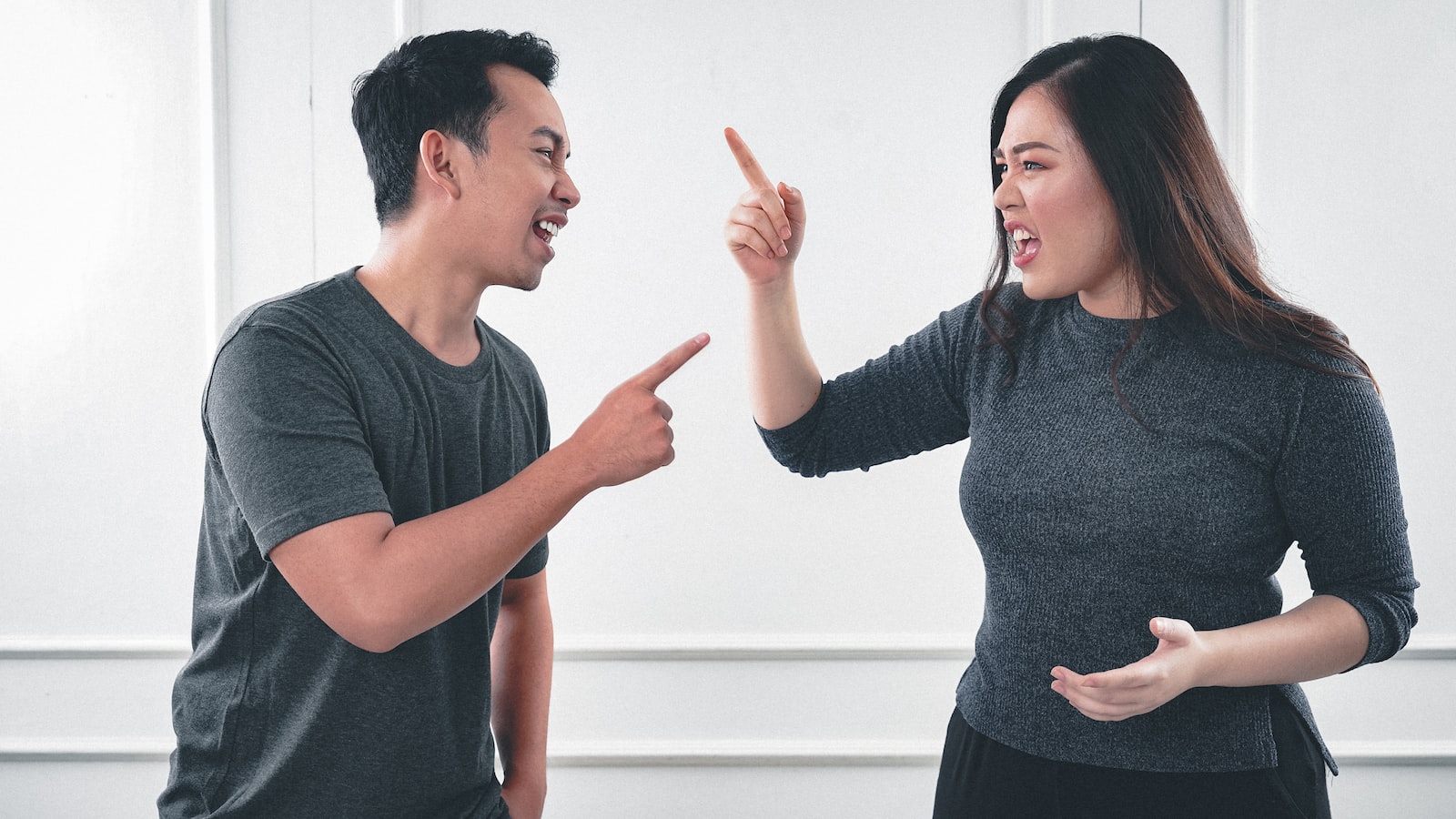There are two ways to repair a damaged workplace relationship.
The first way, the most common way, is for a mediated discussion between both parties to take place with the aim of reaching an ‘amicable’ – read tolerable – conclusion. But in reality, often both people still feel resentful and they move forward avoiding each other as much as possible.
The second way, albeit more challenging, is to ask quality questions that empower both parties to be accountable, responsible and empathetic. The net result being the workplace relationship evolves and deepens facilitating the growth of everyone involved. In this article, we will walk step-by-step through the latter approach. But before we can approach the ‘how’, we need to explore human value systems.
As you get ready for work each morning, there are a few essential things you know you bring with you each day. This includes the usual things such as a packed lunch, house keys and wallet. But above and beyond the tangible items, every person brings their own unique value system to work with them each day. This hierarchy of values represents those things that are most meaningful to you, all the way down to those that are least meaningful. Regardless of if you are cognizant of your own specific value system or not, they will, to a large degree, determine how well you relate to those around you.
When someone supports your values, you become more open and responsive, showing support and enthusiasm. On the other hand, when someone challenges your values, you become more agitated, defensive, and critical. If a workplace relationship is damaged by a disagreement or conflict that challenges an individual’s values, repairing it can be difficult.
The solution to fully resolving this workplace challenge involves an internal, independent, reflective component, and an external, collaborative, communication component.
Internal work
The saying ‘it takes two to tango’ may be an old expression, but it does ring true, it’s helpful to remember that there are two people involved in every dynamic and every workplace relationship..regardless of if one individual takes a more prominent role. Each individual can sit down and reflect on specific questions:
- What was my role?
- How did I contribute to the development of the dynamic?
- How am I accountable for the outcome?
- How did I co-create this event?
Although sometimes sobering to answer, when we can take an objective look at a challenging dynamic, we are able to identify key lessons that we can take forward with us.
Take ‘Kelly’ for example, she was struggling with her interactions with one of her colleagues. This developed over several months and eventually escalated to a large and public argument where she accused her colleague ‘Laura’ of repeated, inappropriate criticism. When Kelly objectively reflected on the issue, she was able to recognise that she did not, at any point, communicate her feelings to Laura and had assumed Laura knew her behaviour was upsetting her. She realised that one of the reasons the situation escalated was she did not express any of her thoughts to Laura and made assumptions about her intentions. This helped her to accept her role and minimised the emotional charge.
From a place of owning our role in the dynamic, we can then reflect on the advantages and benefits of facing the challenge. This often feels counterintuitive, but when fully considered can reveal important moments of personal growth. Some key reflective questions are:
- How did it serve me?
- How did it benefit me directly and indirectly?
- What did I learn?
- How did it push me to grow?
- How did it help me become more responsible?
- How did it challenge any unrealistic expectations?
In Kelly’s case, the disagreement, despite being stressful and challenging, provided many valuable lessons. Through reflection she realised that during this difficult period, she confided in two other colleagues and her workplace relationship with them has become much stronger as a result. This has improved her overall experience of her work. She realised the dynamic with Laura pushed her to eventually speak up and express herself, something she often struggled with and criticised herself for. She was able to see this conflict pushed her to step up and set boundaries with how people communicate with her.
Kelly realised that she had an unrealistic expectation that Laura should know exactly what her feelings are and should be able to understand how her words were upsetting her. She realised the power she had in using her voice to let the other person know when her values have been challenged. She realised it benefited her indirectly in that she shared her struggles with her partner, it brought them closer together and he played a more active role in providing emotional support, something she had been wanting to happen for a long time.
With these reflections assisting Kelly to take a more holistic view of the event, it helped to transform her perception of the falling out and actually begin to appreciate the challenge as a key growth opportunity.
The next stage of the reflective process is to view the situation from the perspective of both individuals’ values. Knowing that people naturally become more agitated, defensive and critical when their values are challenged, we can see the situation from a more balanced perspective. We can reflect on:
- What are my values and how do I embody them?
- In what way did this other individual challenge my values?
- What are the values of the other person involved?
- How did I challenge their values?
When Kelly examined her situation through both hers and Laura’s values; she realised that she has a high value on calm, measured communication and taking the time to fully explore an issue before taking action. She identified her values were challenged because Laura was placing tight time restraints on her work and was following up in a direct manner.
Kelly also realised that Laura has a high value on meeting ambitious work objectives. Laura pursues that very efficiently and by wanting a slower, more measured approach, it challenged her values and that was one of the primary drivers for why she communicated the way she did. Examining the situation through the lens of values helps both parties to see what their values are, why they were challenged and why the other person behaved the way they did. The result of this is greater understanding and empathy.
Our final component of the internal reflection is aimed at identifying specifically what the other individual did or didn’t do that we resent. When we try to process difficult experiences through feelings and emotions, due to their transient nature, finding resolution can be messy. Instead, we can ask specific questions to identify the trait, action or inaction we dislike:
- What is the specific action(s) this other individual did that I dislike?
- What specific inaction(s) didn’t this other individual do that I resent?
By asking specific questions and focusing on actions and inactions, this gives us tangible content that we can use to open a dialogue and implement corrective action. In Kelly’s situation, she was able to clearly identify three points of discussion.
- She perceived Laura to interrupt her before she could finish her sentence.
- She perceived Laura used a critical tone of voice.
- She perceived Laura did not give her ideas reasonable consideration.
First and foremost this gave Kelly clarity on exactly what had been upsetting her for such a long time. She had been explaining the situation in terms of feelings – “she makes me feel anxious, she dismisses me, she ignores me”. These answers only served to make Kelly angry. But by specifically identifying the key actions and inactions, she felt she could communicate her needs more clearly.
External work
With each individual now having clarity on their role in the development of the difficult dynamic, as well as understanding the learning, benefits and growth opportunities of the experience, the event can be seen in an entirely new light. After additionally having explored the dynamic through the perspective of personal values, the emotional charge toward the situation should now be neutral.
It is now, when both people are psychologically balanced, that constructive change can take place. Using the approach of specificity mentioned earlier, both people can share actionable feedback that can be discussed openly and plans put in place. The key with this stage is to share observations, not evaluations. When we first explored this with Kelly, her complaints were:
- She perceived Laura didn’t listen to her.
- She perceived Laura talked down to her.
- She perceived Laura disrespected her.
Notice how none of these complaints are observations, they are all interpretations and evaluations of Laura’s behaviour.
The specific observation was Laura would interrupt Kelly before she could finish her sentence. This is an observable fact that can be clearly identified by both people. Whereas ‘not listening’ and ‘disrespecting’ are Kelly’s analysis of the situation. In the vast majority of cases, it is the interpretations and evaluations we share that cause the greatest emotional charge in the other person. Thus preventing the desire to collaborate and problem solve. But when we stick to observations, it removes the biassed filter of each person’s unique values and gives tangible data to work with.
Finally, the emotional charge of the event has been cleared on both sides, actionable areas of improvement have been identified and shared, and specific action steps can be put in place to ensure both parties have their needs met going forward. This allows everyone involved to see the experience as a learning opportunity and often brings people closer together.
A full resolution and repair of the workplace relationship can now flourish.

Danny Greeves
Danny is a multi-award-winning professional therapist, coach, hypnotist, author, and speaker. His mission is to change the landscape of trauma therapy and help people reduce and resolve painful or traumatic memories based on the groundbreaking Split-Second Unlearning Theory. Danny is a regular expert on BBC Radio and was featured in USA TODAY as being in the top 9 coaches globally to help you level up your life in 2022. Danny works with private clients on a 1-2-1 basis in addition to corporate clients including the likes of Google.


